Take
a team of six graduates, two British-made 4 x4s with endless support from the
Austin Motor Company, dozens of sponsors, the enthusiastic backing from a university
in a great city and you have an expedition to drive around the world.
Thirteen
months, twenty countries and about 48,280 kms/ 30,000 miles later and it became
a 'first'. The Around the World journey had never been done in that way before
and certainly never with a Wrayflex -the first and only British made single lens
reflex [SLR] camera.
Before
starting the picture sequence I'll add that the Wrayflex had a quirky history
and there's a page about that at the end.
Departure
- Wednesday August 31st 1960
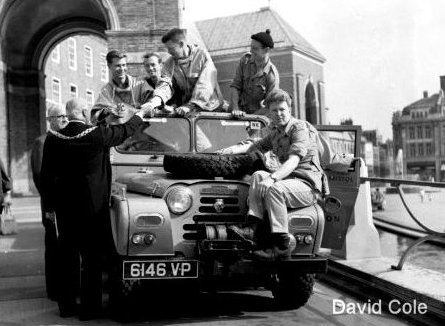
We
set out from Bristol with Bombay / Mumbai as our first major destination and an
ETA of mid-October. That was just six weeks away so there would be no time for
dallying or sight-seeing. The Lord Mayor of Bristol and the University Vice Chancellor
set us on the road.
August
31st 1960 - Bristol to Dover. We were booked on the ferry to cross
the English Channel to Boulogne - France.
Dover Customs House
My Wrayflex
was waiting for me as the Wray Company had been able to class it as a 'Personal
Export' so no taxes were to be paid …..or a saving of about twenty-two percent.
Another package contained film from Kodak.
September
1st 1960 With three drivers in each car we drove non-stop from Boulogne to
Strasbourg by which time I had read the Wrayflex instructions and sorted some
film.
September
2nd 1960 We rushed southwards through Germany via Munich to the Austrian border.
September
3rd After crossing into Austria I began to take photographs. Here is the first
shot on the new camera and it was taken through the Gipsy windscreen.
Austria 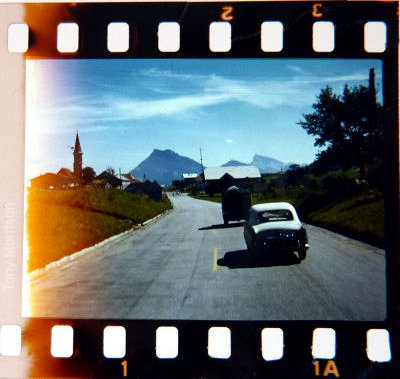 The
frame is numbered 1 1a and the orange tint on the left is from light affecting
the beginning of the film as I was trying to squeeze an extra shot from my expensive
Kodachrome - for the tech minded it was Type F and only 12 ASA - or 'not highly
sensitive'. For the cash conscious it worked out at about 50p a shot in today's
money [2018]. 'Very definitely it was not the era of click… click… click The
frame is numbered 1 1a and the orange tint on the left is from light affecting
the beginning of the film as I was trying to squeeze an extra shot from my expensive
Kodachrome - for the tech minded it was Type F and only 12 ASA - or 'not highly
sensitive'. For the cash conscious it worked out at about 50p a shot in today's
money [2018]. 'Very definitely it was not the era of click… click… click
Here
is frame 2 - Meet the Team 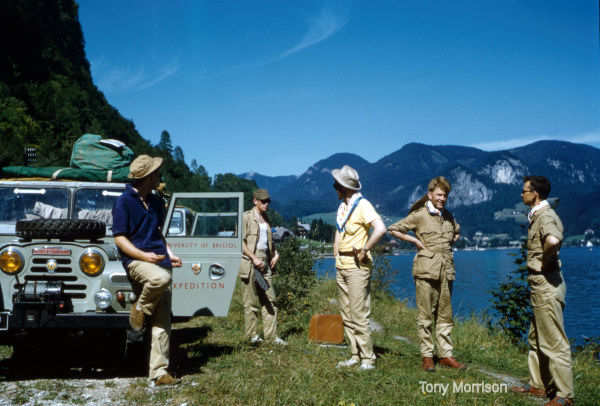 Austria.
We stopped beside the Wolfgansee about 35 kms/ 22 miles from Salzberg. Enclosed
by the beautiful Salzkammergut mountains the lake is now a popular tourist destination.
This shot was taken on the standard Unilux lens. Austria.
We stopped beside the Wolfgansee about 35 kms/ 22 miles from Salzberg. Enclosed
by the beautiful Salzkammergut mountains the lake is now a popular tourist destination.
This shot was taken on the standard Unilux lens.
I
posed the team in 1960s style.
From
left to right - Roger Tutt - economist, Peter Krinks -geographer, Malcolm McKernan
- writer, Don Pilton Medical Doctor and Mark Howell, geographer. I am behind the
camera. September
4th 1960 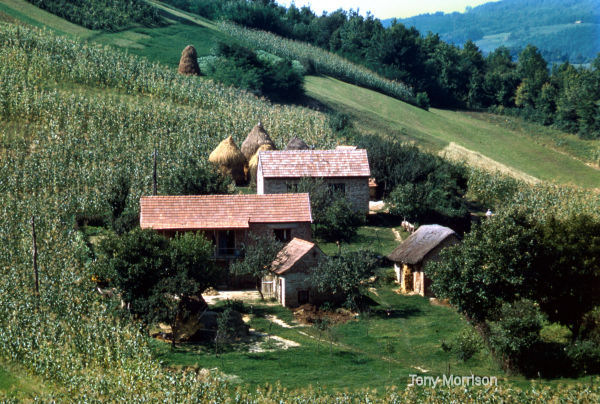 A
farmstead near Varazdin in Yugoslavia. Now this region is part of northern
Croatia. Here I was using my telephoto lens for the first time - a 135mm Wray
Lustrar. A
farmstead near Varazdin in Yugoslavia. Now this region is part of northern
Croatia. Here I was using my telephoto lens for the first time - a 135mm Wray
Lustrar.
September
5th 1960 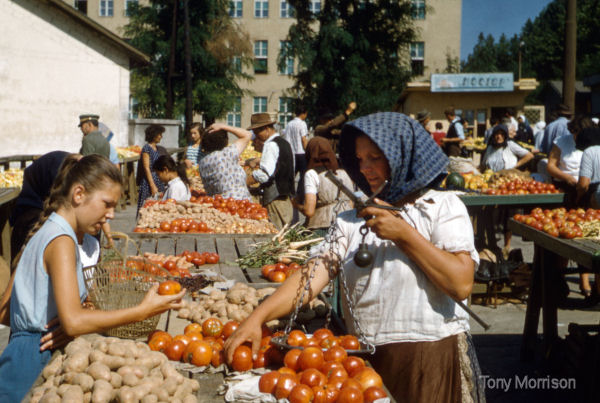 Yugoslavia
A market in Belgrade now the capital of Serbia. Yugoslavia
A market in Belgrade now the capital of Serbia.
In
1960 Yugoslavia was a Communist country though split from the Soviet bloc. I felt
I had to be cautious.
September
5th 1960
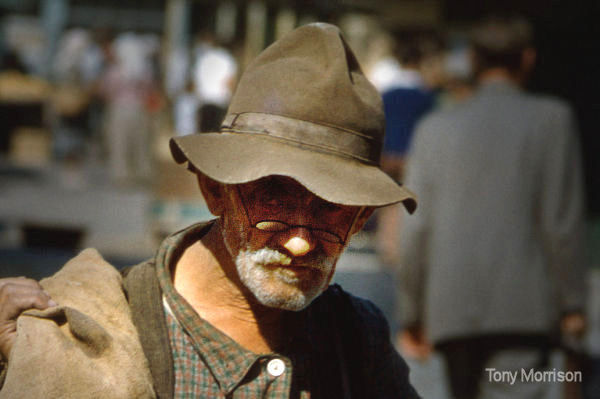 Yugoslavia
An elderly gent with his specs in the Belgrade market. Taken on my Lustrar
135mm. Yugoslavia
An elderly gent with his specs in the Belgrade market. Taken on my Lustrar
135mm.
September
5th 1960
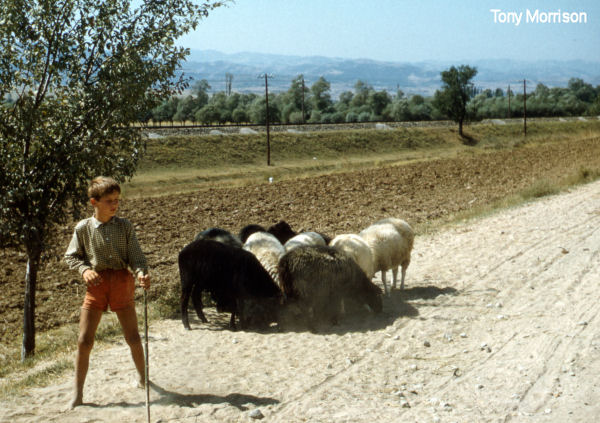 Yugoslavia
On the dusty road to Nis also now in Serbia - we were heading southeast towards
the Yugoslav border with Greece. Yugoslavia
On the dusty road to Nis also now in Serbia - we were heading southeast towards
the Yugoslav border with Greece.
September
7th 1960
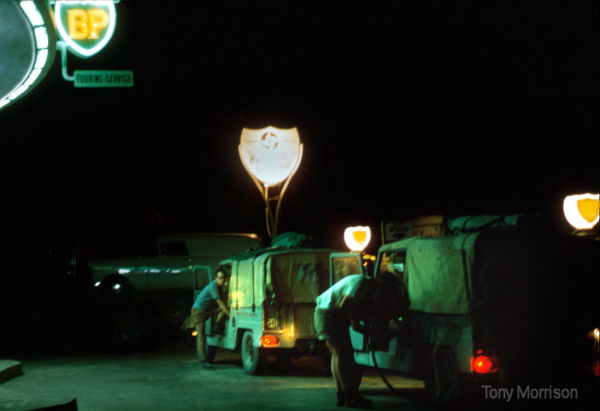 Greece
In the southeast approaching Alexandroupolis we take on fuel at a BP station.
I used a tripod to steady the camera and an exposure of 4 seconds at F2.8 on the
Unilux 50mm lens. Greece
In the southeast approaching Alexandroupolis we take on fuel at a BP station.
I used a tripod to steady the camera and an exposure of 4 seconds at F2.8 on the
Unilux 50mm lens.
September
7th 1960 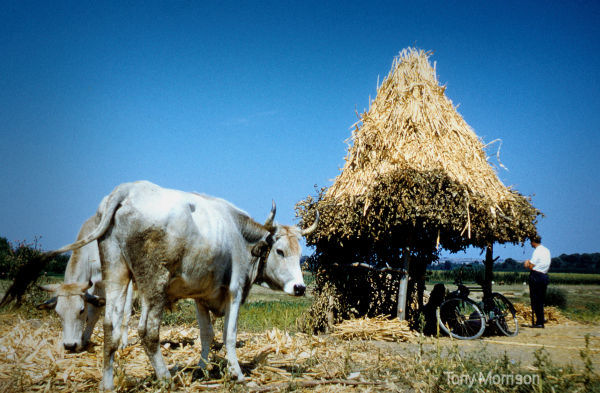 Greece near Orestias close to the Turkish border. The maize harvest - a
workers's hut for protection in the sun and at night for guards protecting the
crop.
Greece near Orestias close to the Turkish border. The maize harvest - a
workers's hut for protection in the sun and at night for guards protecting the
crop.
September
10th 1960
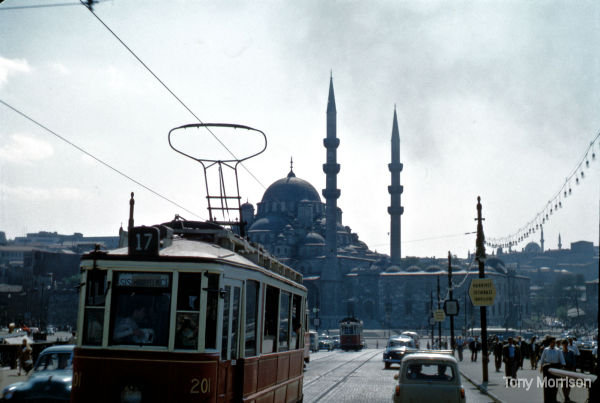 Turkey,
Istanbul Galati Bridge, trams and the New Mosque. Turkey,
Istanbul Galati Bridge, trams and the New Mosque.
September
11th 1960
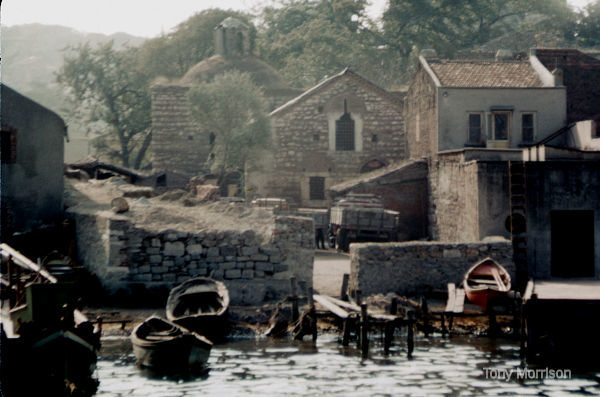 Turkey,
Uskudar on the Asian side of the Bosphorus. We crossed by ferry and Uskudar then
a small, very traditional town was the landing point. Turkey,
Uskudar on the Asian side of the Bosphorus. We crossed by ferry and Uskudar then
a small, very traditional town was the landing point.
September
13th 1960
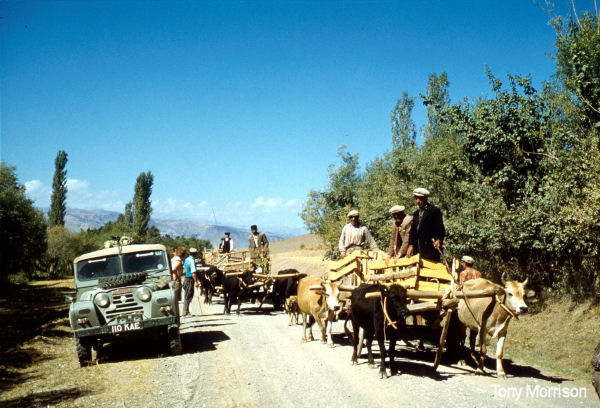 Turkey
Bullock carts with large wooden wheels near Susehri. For detailed pictures of
the carts see the Black + White in Nonesuch Silver Prints. Turkey
Bullock carts with large wooden wheels near Susehri. For detailed pictures of
the carts see the Black + White in Nonesuch Silver Prints.
September
15th 1960
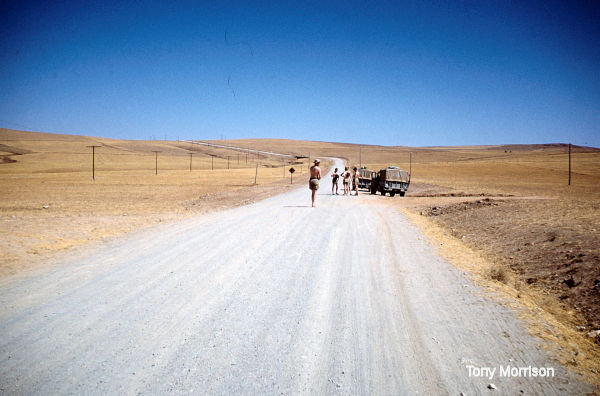 Turkey
Approaching the Iranian border - the dirt road is wide and empty. But the surface
was deeply corrugated and jolted the cars almost to destruction. This pic was
taken on my Wray Lustrar wide angle lens. The vignetting shading in the corners
was a problem with the wide angle. Turkey
Approaching the Iranian border - the dirt road is wide and empty. But the surface
was deeply corrugated and jolted the cars almost to destruction. This pic was
taken on my Wray Lustrar wide angle lens. The vignetting shading in the corners
was a problem with the wide angle.
September
20th 1960
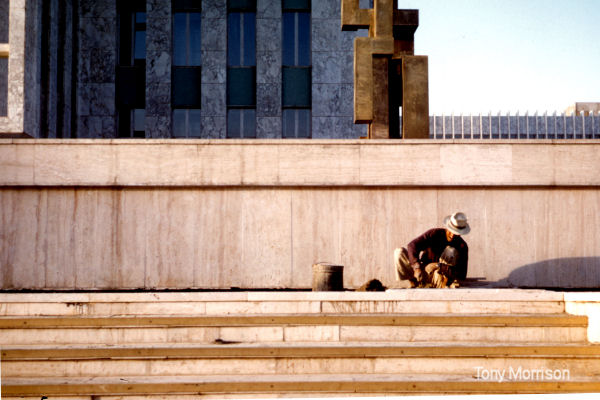 Iran,
Tehran Twenty one days from Bristol. Here the new Senate building is being completed. Iran,
Tehran Twenty one days from Bristol. Here the new Senate building is being completed.
September
21 1960
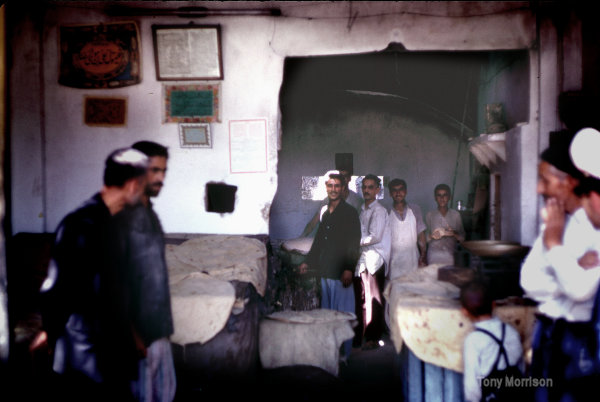 In
Firuzkuh at the foot of the Elburz mountains we stopped at a bakery for some flatbread. In
Firuzkuh at the foot of the Elburz mountains we stopped at a bakery for some flatbread.
September
25th 1960 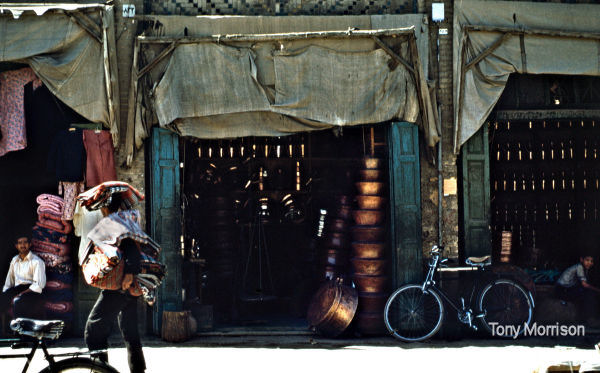 We
reached Mashad, Iran's second city and in 1960 suitably remote - we had clocked
just over 8046 kms/ 5000 miles from England. These shops selling copper and rugs
were open to the street. We
reached Mashad, Iran's second city and in 1960 suitably remote - we had clocked
just over 8046 kms/ 5000 miles from England. These shops selling copper and rugs
were open to the street.
But
by now our vehicles were giving serious trouble and we had to wait for spares
sent from Tehran
September
28th 1960 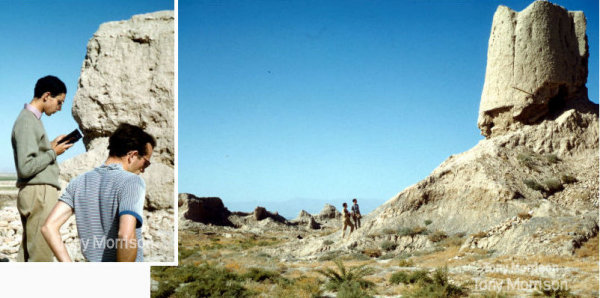 Iran,
During our prolonged stay we met a young British diplomat, David Hannay who took
us to the ancient city of Tus [also Tous] about 25 kms/ 15 miles from Mashad.
Tus has a history dating back over 2000 years and was a fortified city on the
Silk Road when Mashad was a village. David Hannay is now Baron Hannay of Chiswick
and in the 1990s was the UK's Ambassador to the UN. Iran,
During our prolonged stay we met a young British diplomat, David Hannay who took
us to the ancient city of Tus [also Tous] about 25 kms/ 15 miles from Mashad.
Tus has a history dating back over 2000 years and was a fortified city on the
Silk Road when Mashad was a village. David Hannay is now Baron Hannay of Chiswick
and in the 1990s was the UK's Ambassador to the UN.
While
we were delayed in Mashad we met Jim Davern from Melbourne who had been working
on secondment with the BBC in London and was making his way back to Australia
- Melbourne was on our route……more about that later October
1st 1960 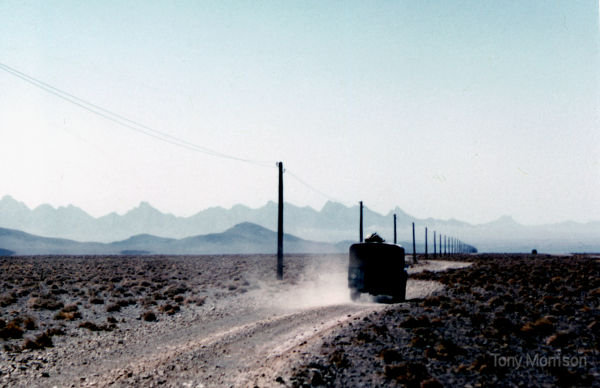 On
the way again - now towards Herat, Afghanistan. On
the way again - now towards Herat, Afghanistan.
The
diary records 'poor roads with no other vehicles in sight, loose gravel and badly
looked after so that a ridge in the middle has built up to 18 cms / about 7 inches).' October
3rd 1960 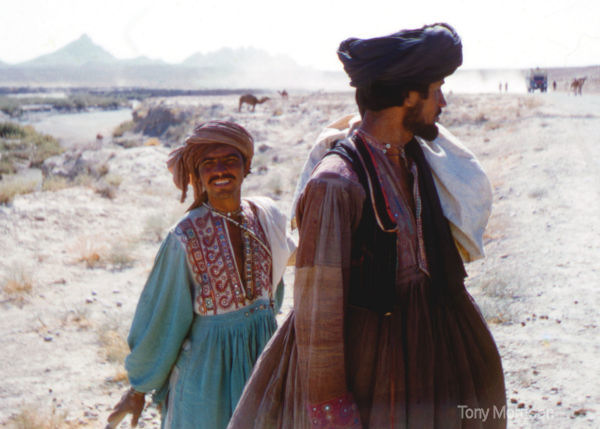 Southern
Afghanistan and turbanned tribesmen. We had been warned not to use the
route through the mountainous central region as both the road and likely welcome
were uncertain. No one here could not have been more friendly. Southern
Afghanistan and turbanned tribesmen. We had been warned not to use the
route through the mountainous central region as both the road and likely welcome
were uncertain. No one here could not have been more friendly.
October
6th 1960 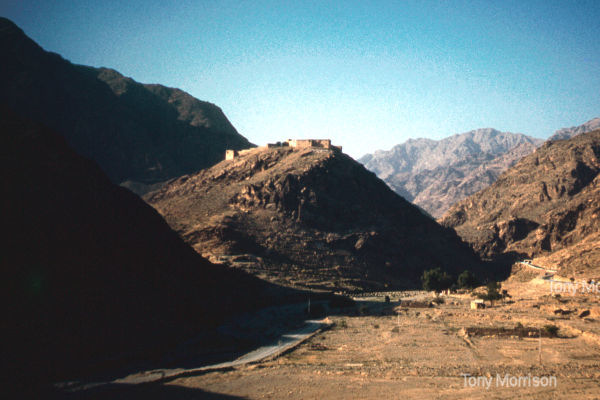 We
left Afghanistan and entered Pakistan via the Khyber Pass. The way
through the mountains was narrow and heavily guarded. I avoided getting military
posts in the frame. We
left Afghanistan and entered Pakistan via the Khyber Pass. The way
through the mountains was narrow and heavily guarded. I avoided getting military
posts in the frame.
October
7th 1960 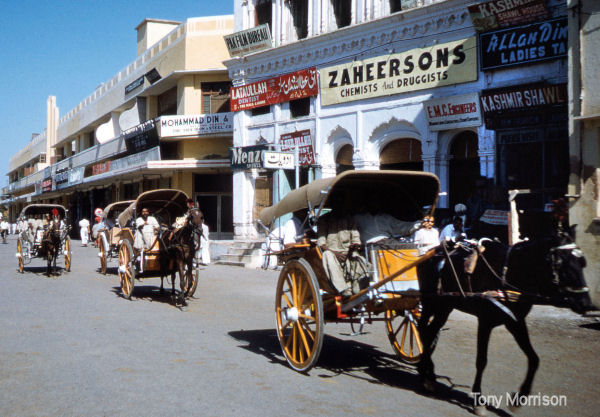 We
reached Lahore in Pakistan the capital of the new nation State of West
Pakistan. It was only thirteen years since Independence and many of the signs
were still in English. This shot was taken in The Mall. We
reached Lahore in Pakistan the capital of the new nation State of West
Pakistan. It was only thirteen years since Independence and many of the signs
were still in English. This shot was taken in The Mall.
October
10th 1960 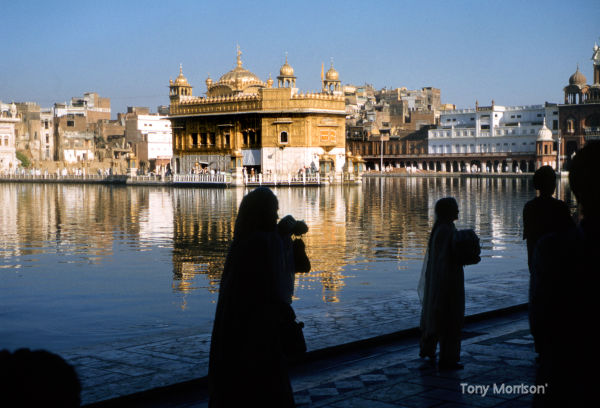 India,
Amritsar The Golden
Temple of the Sikhs. India,
Amritsar The Golden
Temple of the Sikhs.
Dating from 1577 and re-built several times this has been an open centre of worship
to men and women of all faiths. The
lake or 'tank' is artificial and the temple is reached by a causeway. October
10th 1960 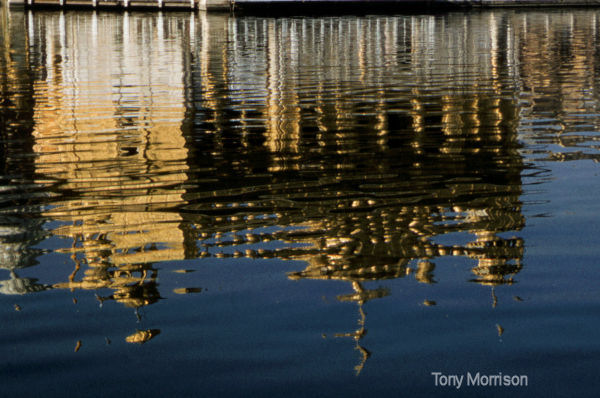 India,
Amritsar, reflections of the Golden Temple of the Sikhs in the artificial lake
surrounding the heavily gilded building. India,
Amritsar, reflections of the Golden Temple of the Sikhs in the artificial lake
surrounding the heavily gilded building.
October
10th 1960 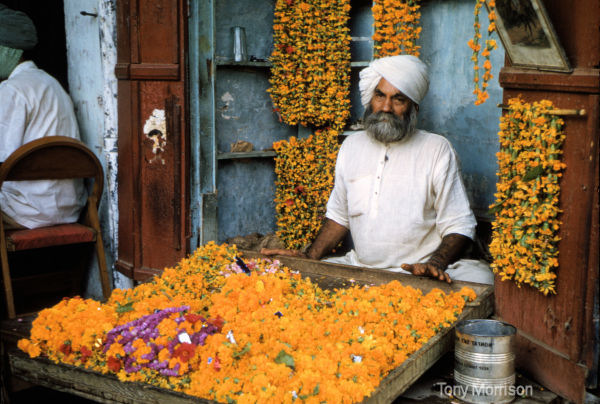 India,
Amritsar. A turbanned Sikh sells garlands of marigolds outside the Golden Temple. India,
Amritsar. A turbanned Sikh sells garlands of marigolds outside the Golden Temple.
October
10th 1960 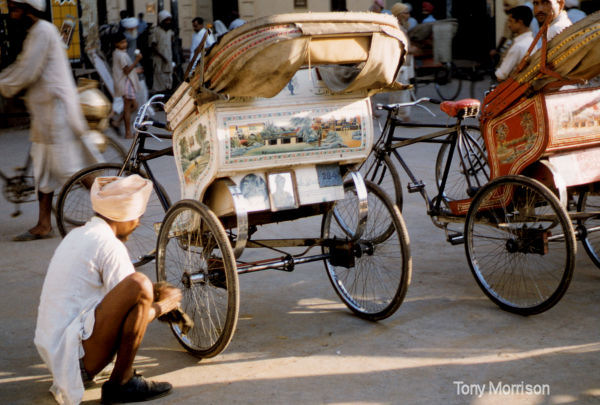 India,
Amritsar. Beautifully decorated trishaws - cycle drawn chairs. India,
Amritsar. Beautifully decorated trishaws - cycle drawn chairs.
October
10th 1960 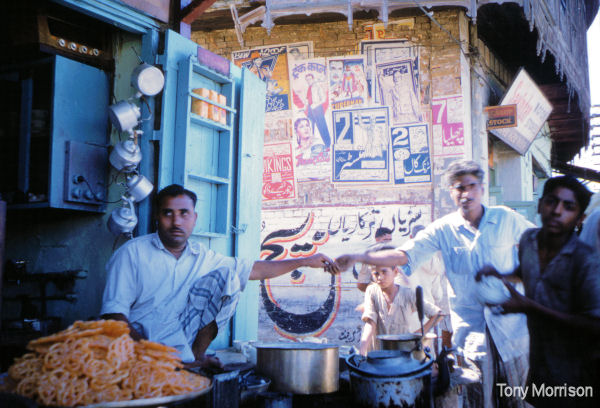 India,
Amritsar The man on
the left is making Jalebi - a sweet concoction running with syrup I had tasted
in one of the first curry houses in post-war Bristol - Delicious. India,
Amritsar The man on
the left is making Jalebi - a sweet concoction running with syrup I had tasted
in one of the first curry houses in post-war Bristol - Delicious.
October
13th 1960 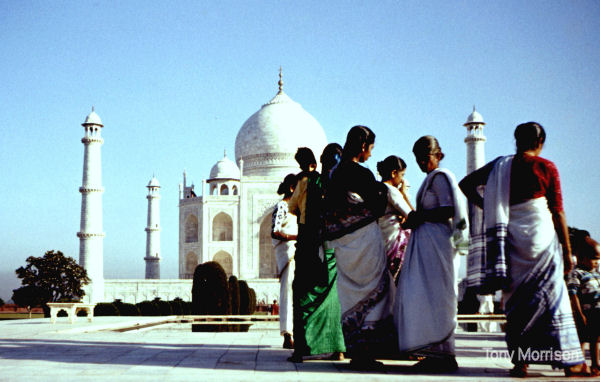 India,
Agra The Taj Mahal. We saw few foreign visitors and the wonderful setting belonged
to groups of Indian women in their elegant saris. India,
Agra The Taj Mahal. We saw few foreign visitors and the wonderful setting belonged
to groups of Indian women in their elegant saris.
14th
October 1960 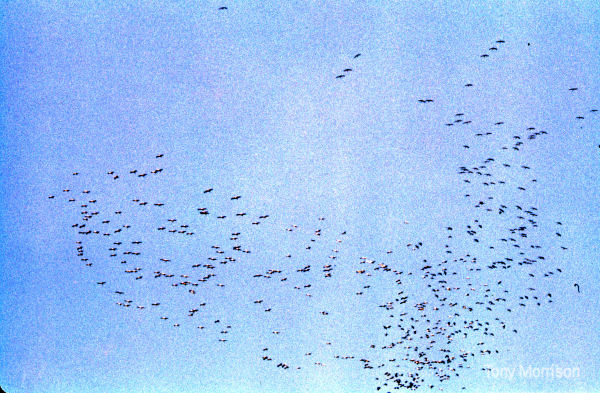 India
Near Indore and about 11,265 kms / 7000 miles from home. Huge flocks of vultures
soared on thermals. I'm including this historic picture even though it's a bit
grainy - it was Ektachrome and it is unsharp as the camera was hand held with
my Lustrar 135mm telephoto. It was just a 'try'. We saw many similar flocks later
- but such flocks have gone thanks to modern chemicals. The vulture population
has collapsed from an estimated 80 million to a few thousand. India
Near Indore and about 11,265 kms / 7000 miles from home. Huge flocks of vultures
soared on thermals. I'm including this historic picture even though it's a bit
grainy - it was Ektachrome and it is unsharp as the camera was hand held with
my Lustrar 135mm telephoto. It was just a 'try'. We saw many similar flocks later
- but such flocks have gone thanks to modern chemicals. The vulture population
has collapsed from an estimated 80 million to a few thousand.
On
October 15th 1960 We arrived in Bombay / Mumbai and began the preparations for
a two month stay in some villages in the Deccan highlands a further 241 kms/ 150
miles away in the Satara district of Maharashtra State. The vehicles were overhauled
and spare parts brought in through the docks. Kodak India had been warned in advance
and my film was processed in 24 hours - that was fast - believe me. The results
confirmed that the Wrayflex had worked brilliantly.
Onwards
to the villages. October
21 1960 We headed first to Poona / Pune to meet the Indian team studying the economic
and social conditions of the village of Pusegaon. We spent the next two months
in the village of Pusegaon and neighbouring villages of Aundh and Koregaon. An
outline of our work is on this site. (University of Bristol Expedition). Here
are some pictures. I have others of crops, history, art, leprosy, industry and
many more. October
1960 India, in Aundh the children head for the village school 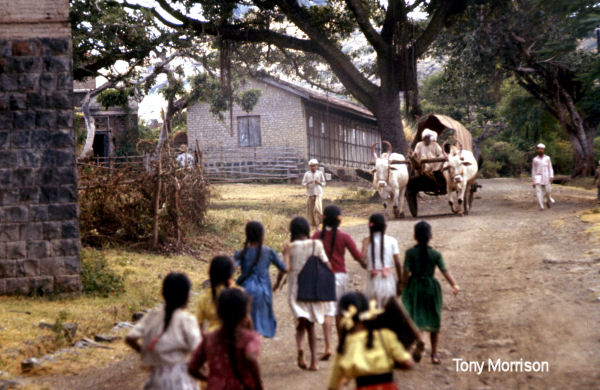
October
1960 Aundh Children with black slates for writing - and the village schoolmaster. 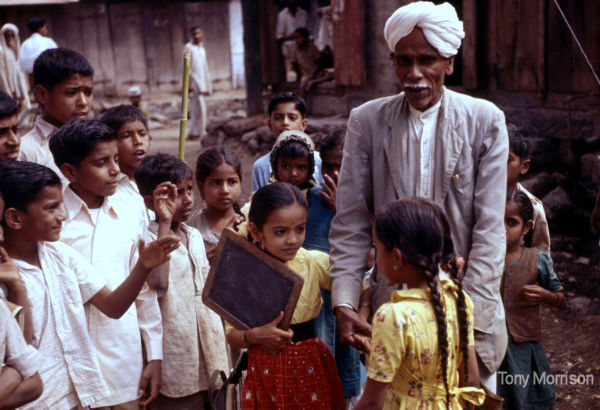
November
1960 Pusegaon - a family in a poorer part of the village. 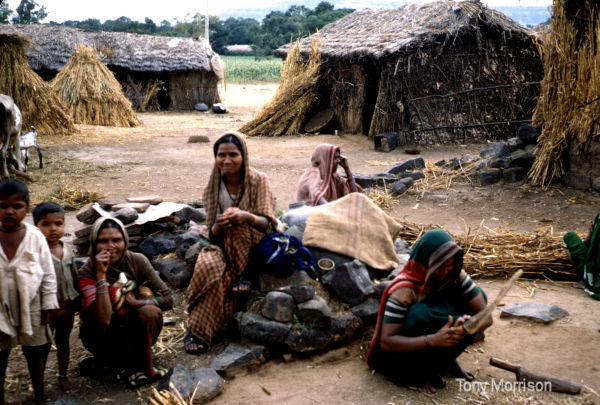
November
1960 Pusegaon - a farmer watches his crop drying 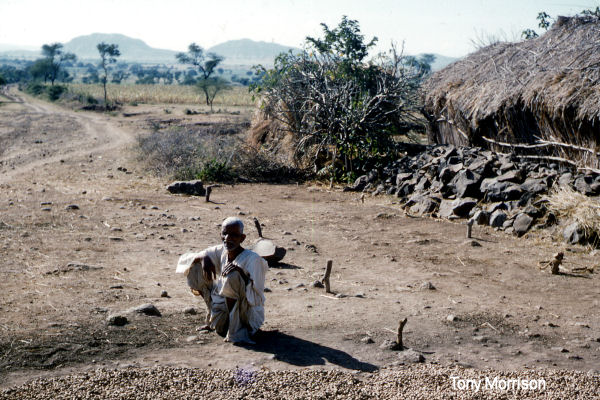
Novmber
1960 - Winnowing. After beating with a wooden mallet the seeds and chaff
are separated. The mixture is dropped from a bowl held high and the wind blows
the chaff to one side 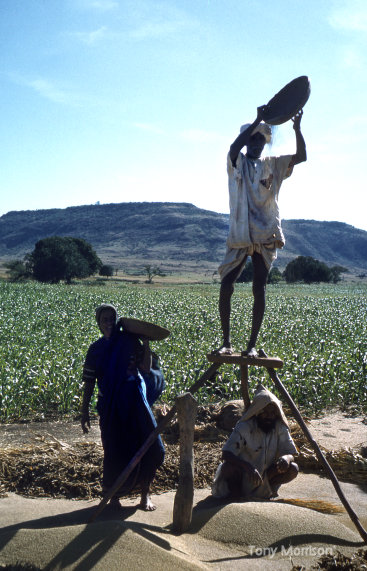
December
1960 The children watched our every move - we heard about that in 1999. (See Letter
from India in the University of Bristol Expedition pages on this site.) 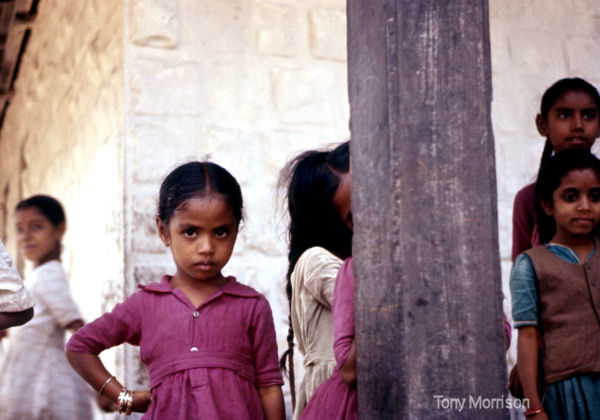
December
1960 A young girl from a wandering tribe and her baby in Rhimatpur 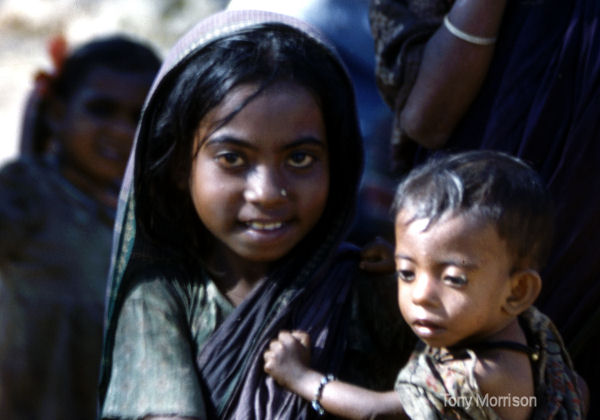
December
1960 A young woman working to build a road near Pusegaon 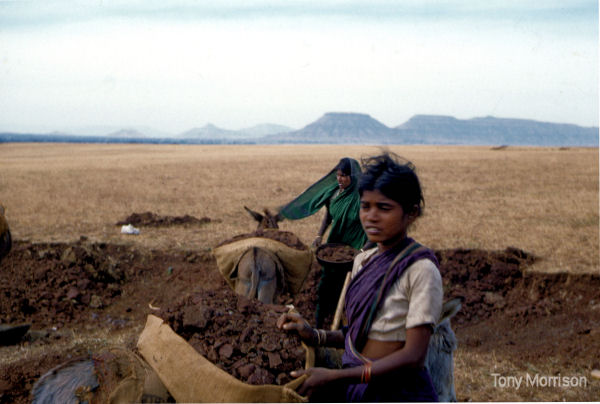
December
1960 The potter in Pusegaon became a good friend and made several small saucers
which are still in my collection - the craft has gone from the village. 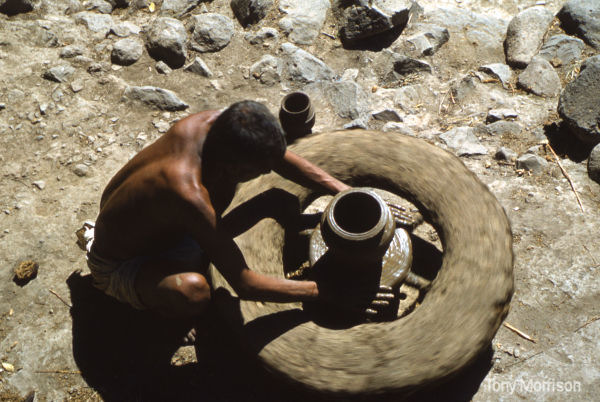
December
1960 Pusegaon - a visitor to the annual Fair 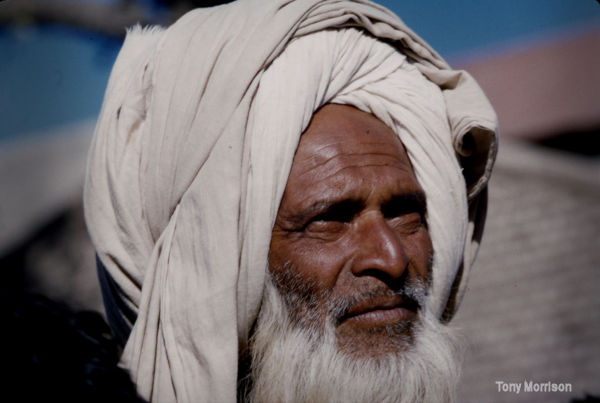
December
1960 The road to Pusegaon 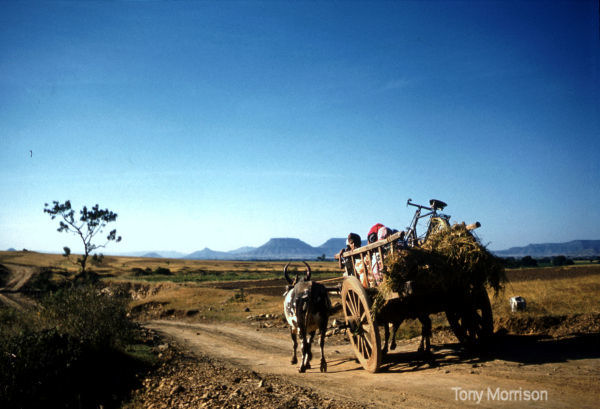
December
1960 And to wrap up the story - a family homeward bound after work. 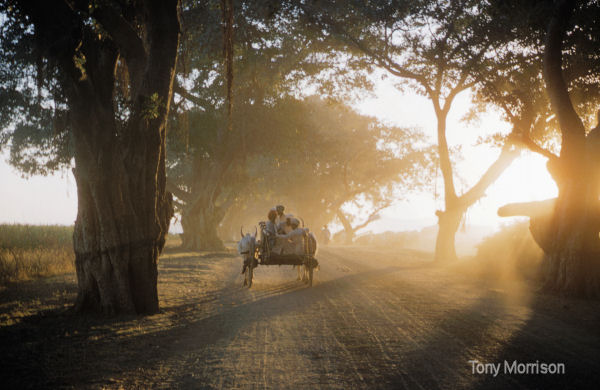
January
2nd 1961 We left Pusegaon with our recordings, notes film and pictures
stored in a filing cabinet locked in one of our vehicles. And there they stayed
for another nine months.
Here
I will add my thanks to the people of Aundh, Koregaon and Pusegaon for a marvellous
welcome - the full story and an account of our most amazing 'Return' in 2000 is
on this site. In
Part Two I cover the onward journey by sea and land Eastward to the Americas to
get us home to Bristol.
Technical
details
Camera
Wrayflex Model ll
Lenses
Wray Unilux 50mm F2.8 / Wray Lustrar 35mm F 3.5 / Wray Lustrar 135mm F4
Extension
rings for close-ups, a lens hood for the 135mm and UV filter
Film
- mostly Kodachrome 35mm [sensitivity 12 ASA ] or Kodak Ektachrome 35mm [Sensitivity
] Both film types were processed by Kodak in India.
Light
measurement by a separate, hand held Weston Master lll
Flash never used.
I had flash bulbs and an early type of Electronic flash which was very unreliable
For
long exposures I used a tripod
For
Black and White I used a British made Microflex TLR [Twin lens reflex] and
a Leica lllg lent by F G Warne, Bristol.
RETURN
TO THE CONTENTS AND STORY PAGE
| |
|
|
| The
text and most of the images are © Copyright |
| For
any commercial use please contact | | |
| THE
NONESUCH - FLOWER OF BRISTOL |
| AN
EMBLEM FOR ENTERPRISE | | |
| |